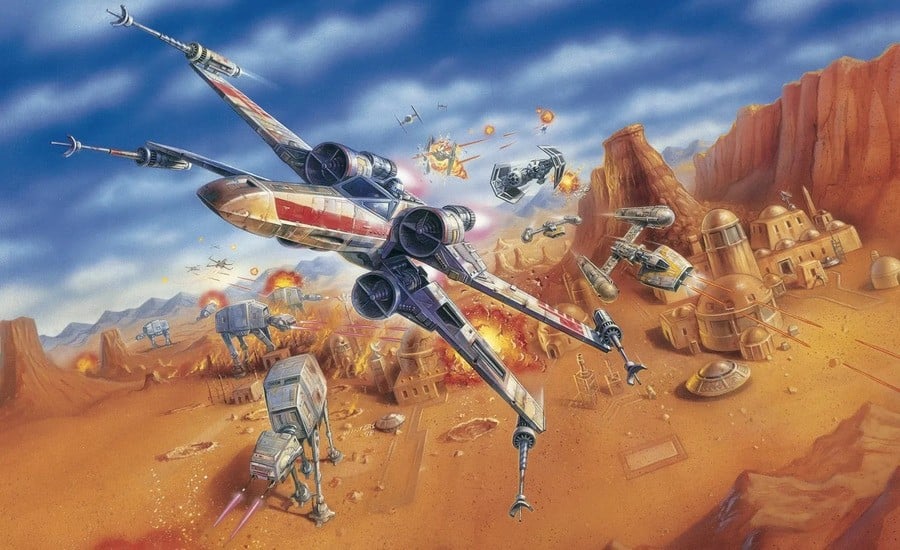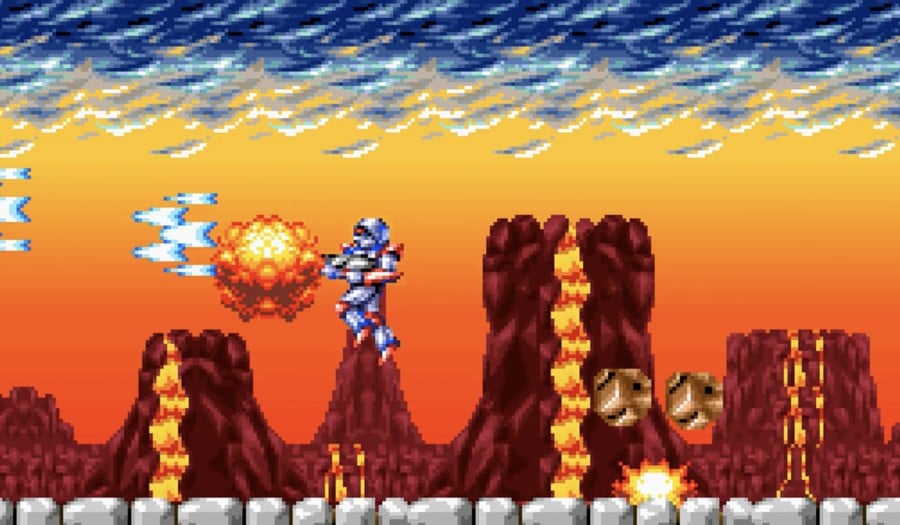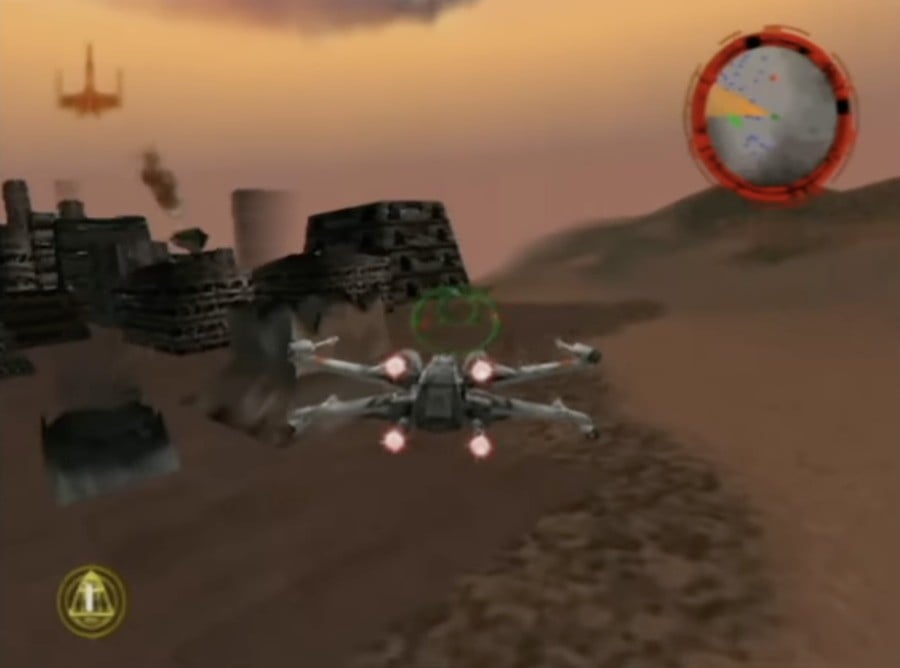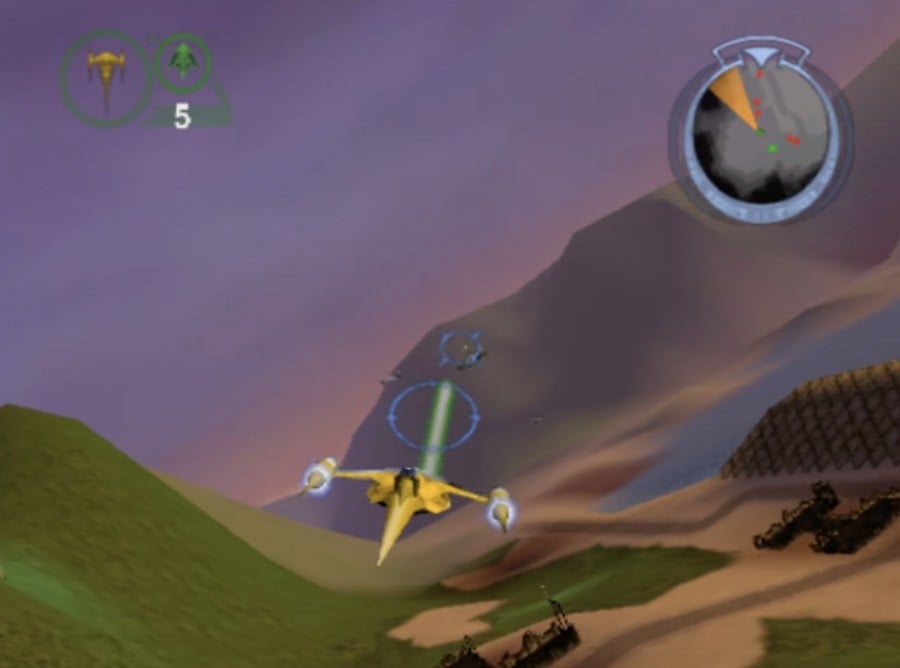
As co-founder of Factor 5, Julian Eggebrecht had a front-row seat to all of the studio’s biggest moments, from its earliest days, through the N64 era and beyond.
His time with the studio put him at the centre of development efforts that would produce some of the Nintendo 64’s best and biggest games. Leveraging years of experience working on the Amiga, SNES and other systems, Eggebrecht and his colleagues produced a slew of hits, including Star Wars: Rogue Squadron, Star Wars Episode I: Battle for Naboo, and Indiana Jones and the Infernal Machine.
In the following interview – the full version of which appears in Bitmap Books' N64: A Visual Compendium – Eggebrecht provides a fascinating insight into Factor 5’s history, its relationship with LucasArts, and the tools and techniques that were used to develop its N64 classics.
Please note that some external links on this page are affiliate links, which means if you click them and make a purchase we may receive a small percentage of the sale. Please read our FTC Disclosure for more information.
Factor 5’s history dates back to well before the Nintendo 64, including some prominent titles on the Amiga and Super Nintendo. What led you into game development, and how did the company initially come together?
Julian Eggebrecht: We all started developing games in high school as a hobby. In fact, the very core of Factor 5 was known in the Amiga hacker scene under the name ‘The Light Circle’. After our first game, Katakis, came out in 1988, things became more serious. We then worked on our first arcade conversion, R-Type, for the Amiga.
The big breakthrough and the games that brought all the key Factor 5 members together for the first time were the Turrican games, initially for the Amiga, and then Super Turrican and Mega Turrican for the SNES and Mega Drive/Genesis. Thanks to their success, Lucasfilm Games offered us work with their properties. We created Indiana Jones’ Greatest Adventures, our first entry into George Lucas’ world.

How did the working relationship between Factor 5 and LucasArts begin?
I cold-called Lucasfilm Games while in high school in May 1989 from Germany to talk to them about an Amiga sequel for Ballblazer, which I really loved.
Through sheer luck, I got through to the development director for the games division, and we hit it off on the phone; he told me that they had just given the Amiga rights for sequels to their German game distribution partner – and that I should contact them. I did, they loved my pitch, and in August 1989 I visited Skywalker Ranch for the first time to discuss what became Masterblazer for the Amiga with the Lucasfilm Games team.
The last day of my visit, we went to the Lucasfilm company store, and I was so broke that one of the games team members had to lend me $20 for merchandise. Fast forward three years and after the success of Turrican, we visited the LucasArts booth at Winter CES 1992/93 to say hello. They immediately demanded their $20 back!
We had a good laugh, and, completely unexpectedly, they told us that we should work together and that we could pick any LucasArts property to work on – except Star Wars. So we picked Indiana Jones.
What was it like making the jump from 2D game development to 3D games on the N64?
We had been experimenting with 3D since the days of the Amiga. One early Factor 5 project was Return to Fractalus, which was supposed to be a sequel to Lucasfilm Games’ Rescue on Fractalus. While it was started on the Amiga, it was clear that the hardware was not capable enough and we put the project on the back burner. But the idea of a flight action game with a non-linear level and control structure stayed very much alive, and tests were conducted on PC hardware in the early ’90s, until the PlayStation came along.
Our first game with 3D elements was Star Wars: Rebel Assault 2, which was a complete re-write and redesign of the LucasArts-developed PC game, as well as Ballblazer Champions, which was a sequel to LucasArts’ other 8-bit classic, Ballblazer.

The jump to 3D was hard. We had to learn everything new: cameras, controls, the spatial orientation of the player and 3D-object animation. Everything was very different from 2D games. A lot of teams gave up during the transition. It didn’t help that we didn’t exactly enjoy the PlayStation. It had very crude graphics with lots of pixels, very unstable rendering of the 3D world and was, in several ways, actually a step backwards from the sophisticated, artistic look of 2D games of the era. It was especially bad for landscape rendering.
When we heard about the N64 and its Silicon Graphics-based capabilities, we were extremely excited. We had a Silicon Graphics Indy in the office for our 3D object creation and animation, so we knew that the look of the N64 would be much more sophisticated.
What was your earliest experience with the Nintendo 64?
We saw the early N64 prototypes at LucasArts right before we moved to the United States, right next door to Skywalker Ranch in beautiful Marin County. The Shadows of the Empire team was working hard on that launch title, and I vividly remember seeing an early version of their Hoth level running on the SGI simulator.
They chose Hoth because it could be represented by very few 3D objects and mostly flat terrain. They described the architecture of the N64 to us in detail. Coming from the PlayStation, we quickly realised that the N64’s micro-code generated far fewer polygons than the PlayStation was capable of. We were also really shocked by the extremely limited features of its RSP [Reality Signal Processor] sound driver.
Lastly, the small on-chip texture memory of the GPU meant that everything we were shown looked very blurry. Not jittery like the PlayStation, but blurry. When we read the actual specs of the machine and chips, however, we also realised that these challenges could be overcome. One just had to think outside the box.
What was it like developing for the Nintendo 64 as compared to something like the SNES?
It was especially hard for the launch teams because the Silicon Graphics simulators and software toolset were extremely rough for game development, whereas development for the SNES was extremely easy, mature and quick – thanks to our self-built ‘Pegasus’ development kits being directly connected to the console hardware.
The N64 in the early days was the polar opposite. We saw the turnaround times that the Shadows of the Empire team had to endure and decided that it was so inefficient that we wanted a completely different approach. We reached out to our PlayStation development hardware partners SN Systems, who are a part of Sony nowadays, but were independent then. We proposed to collaborate on an alternative N64 dev kit and software toolchain, completely circumventing Silicon Graphics’ tools. We focussed on the software toolchain, whereas SN Systems was responsible for the hardware – essentially an N64 cartridge with memory connected to a regular PC so we could work as efficiently as we had for all prior platforms. We luckily never had to use the original development environment.

The missing part after that was low-level direct access to the RSP co-processor, which we had identified as a crucial element, but it was off-limits to everyone because Nintendo and SGI thought no one would be able to handle its complexity. We thought we could write our own micro-code to generate the landscape not on the CPU (it had to handle the whole game already) but with the RSP. We also wanted to write better, faster 3D code to make more polygons possible and produce real-time light generated by lasers and other objects, something not possible with the original micro-code. Last, but certainly not least, we wanted to completely throw out SGI‘s sound driver and write our own sound system with more channels and better-quality music.
We went to Nintendo‘s hardware head, Genyo Takeda, with a detailed write-up of what we wanted to do, why we thought we could do it, and a plea to please give us direct hardware access. To our amazement, Takeda-san agreed, and this started a fantastic collaboration for years to come, ultimately resulting in us being invited to the GameCube/Wii chipset design team and being responsible for the sound DSP and tools for those platforms.
The snowspeeder level from Star Wars: Shadows of the Empire is commonly cited as an inspiration for Rogue Squadron. Can you tell us more about that?
It actually wasn’t at all. Star Wars: Rogue Squadron was really just a skin for our earlier Return to Fractalus project. LucasArts had originally pencilled us in for the prequel trilogy racing game, but fate would have it that they had signed a three-game exclusive deal with Nintendo for Star Wars content. It became clear that our Return to Fractalus project would be the perfect candidate not only for the N64, but also to be one of these games. Since we had proven ourselves with Rebel Assault 2, and this was still in the original trilogy timeline, they agreed to turn Return to Fractalus into a Star Wars project, based on the Star Wars: Rogue Squadron comic books.
Once it was turned into a Star Wars game, we focussed on the X-Wing alone for a long time. The first year of production was just spent on the X-Wing, with the A-Wing, Y-Wing and others following in quick succession. Only then did we tackle the Speeder, since it behaves differently from the other franchise ships. It’s forced to stay close to the ground, something that was useful for the earlier Shadows of the Empire game, but was the opposite of what we wanted to do. We really only fully embraced it in the sequel for the GameCube, where we finally had the chance to realise Hoth as a real battle with all the elements from the movie.

Star Wars: The Battle for Naboo drew heavily on the mechanics of Rogue Squadron. Its combat was, in some ways, actually more advanced than Rogue Squadron’s. What were your goals going into the development of that game?
Battle for Naboo was, on the one hand, the logical title to conclude LucasArts’ three-game deal after the huge success of Star Wars: Rogue Squadron. At the same time, it was a hard project with the fan backlash against Star Wars: The Phantom Menace.
The other prequel games were created before the release, but we had to make Battle for Naboo at a time when everyone was very distraught because of the negative reception of the movie, which only increased in the following year. So, we saw it as a way to refine our technology.
It’s much more technologically advanced than Rogue Squadron and squeezes out every last bit from the N64. RSP-based particles and physics systems, a much deeper draw distance, indoor/city levels – the team pulled out all the stops. Plus, we had truly mastered the use of the N64 Expansion Pak at that point, giving players higher resolution without a compromise in framerate.
Was there anything in Rogue Squadron or Battle for Naboo that the Factor 5 team was particularly proud of?
I think we all were very proud of how true to the look and feeling of the movies we came. Maybe not as spot-on as Rogue Leader and Rebel Strike for the GameCube, and not even close to the unreleased Rogue Squadron Wii, but Star Wars: Rogue Squadron really showed how passionate and uncompromising we were about Star Wars.
Both games, as well as Indiana Jones and the Infernal Machine, proved that we had gained the same capabilities in 3D that we had shown for the 2D systems. A deep understanding of the technology and knowing exactly which tricks to use to get maximum results.

In some past interviews, you have said that Factor 5 liked working on the N64 because you didn’t like dealing with CDs. Could you elaborate more on that?
It’s a common sentiment that cartridges were one of the Nintendo 64’s weaknesses. We really didn‘t like the loading times and error rates of CDs in the early days. Sure, you had more memory and if you had linear music, it made that very easy. But in the case of the music, we always loved to create very interactive, changing and cross-fading music. That was not possible on the PlayStation, and the memory constraints of cartridges were easily overcome if the team was technologically proficient.
The cartridges were a bigger problem for the third-party business model since the production costs were so high – something that didn‘t apply to our games since there was a special publishing deal between LucasArts and Nintendo. Our games were treated like first-party games.
Factor 5 also worked on Indiana Jones and the Infernal Machine. Can you tell us more about how that project began? How happy were you with how the game turned out?
I was a huge fan of Indiana Jones and the Fate of Atlantis and I had high hopes for a Tomb Raider-type Indy game being written and directed by Hal Barwood. Unfortunately, the technology and control for the PC version never came together, and the final product, while having a great story and writing, and good level design, was clunky to play and behind the times. There was a PlayStation version in parallel development, and at some point, it became clear that the PlayStation wouldn‘t have the internal memory to handle the levels, so the project was cancelled.
I was intrigued by the game and suggested that the engineer with the early, unfinished PlayStation game join us and some of our best engineers and artists to create an N64 version – but only under the condition that we could completely re-design and re-implement the controls and camera, as well as use our much more advanced rendering and real-time lighting engine. LucasArts and Nintendo agreed, since there was no Tomb Raider for the N64, and gave full creative and technical direction of the N64 version to me.
So off we went and stuffed a two-CD game into a single cartridge. Not only that, we made it look, sound and play better than on the PC. We burned an inordinate amount of midnight oil on that one. But it worked in the end, and besides a few glitches carried over from the PC version, I think Indiana Jones and the Infernal Machine is a late jewel in the N64 catalogue and one of the technologically craziest feats on the machine.
Can you share anything about Thornado, the unreleased spiritual successor to 1990’s Turrican? How far along did Thornado get before development was cancelled?
The first demo for the Nintendo 64 was just a static street scene with the hero, a police car and aliens on screen. You could rotate the camera, zoom in and out, and that was it. There is one surviving screenshot of that N64 demo out there: a scan from an old magazine.
Our completely playable Thornado demo, with lots of shooting, running and gunning, and a Zelda-like camera and control scheme, was created in the Rogue Squadron engine. That demo only ran on an overclocked N64 with expansion memory and on PC. It was meant as a demonstration stepping stone until we received the promised GameCube prototype hardware. We recently found it in our archives and hope to release it at some point.
The last Thornado demo was created concurrently with that for Rogue Leader, for the Spaceworld 2000 GameCube unveiling – it was finished and quite cool but, unfortunately, not shown since Nintendo wanted us to focus on Rogue Leader at the launch. Parts of that demo – objects and other bits – were re-used later for Star Wars Rogue Squadron III: Rebel Strike.
Why wasn’t Thornado finished?
We simply didn‘t have the resources, either during the early N64 times or in the run-up to the release of the GameCube. Nintendo feared that our focus would have been taken off the Lucas franchises that were so important for them. For better or worse, they were probably right.
